What if you could be an entrepreneurial woodland creature looking for the best pieces of glass? In River Valley Glassworks from Allplay, you can do just that and complete to fill your glassworks with the most colorful river glass pieces to get the highest score.
My first game purchase from Allplay, River Valley Glassworks is definitely a fun and fast experience, but without the expansion, might feel light and like it’s missing an element.
What’s in the box?
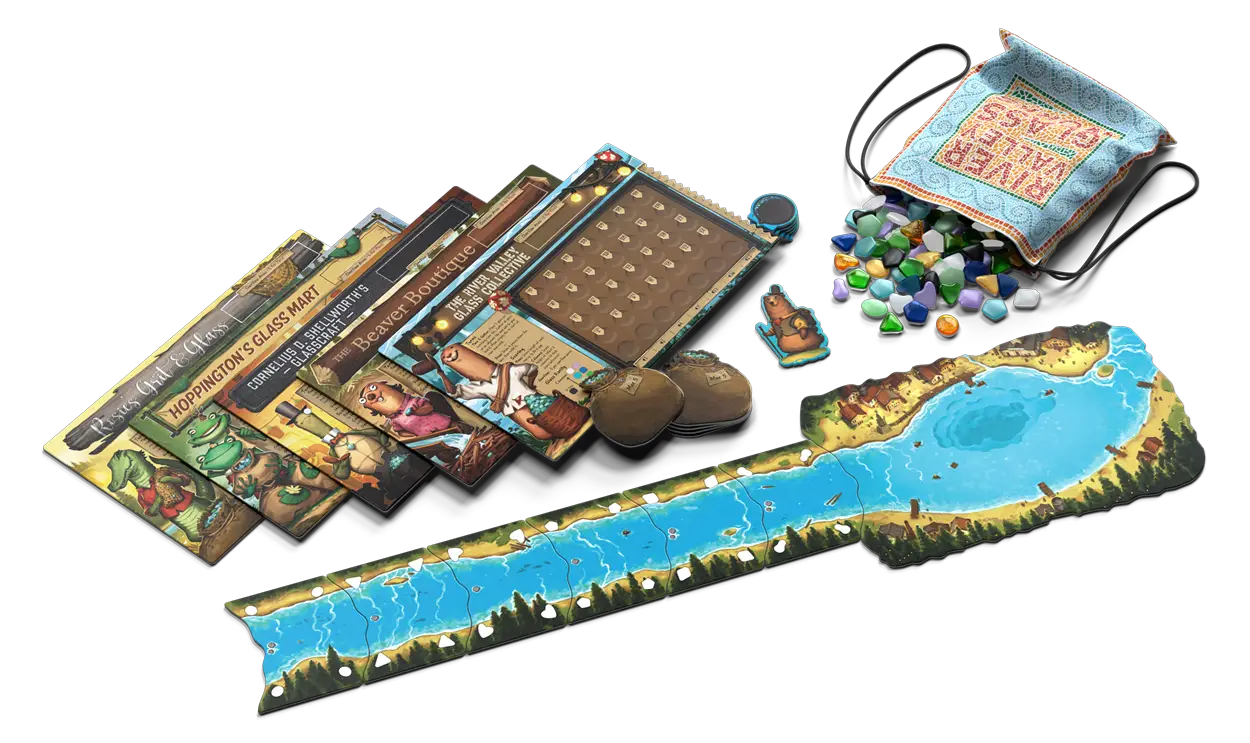
River Valley Glassworks comes with one bag to hold all the glass pieces, a lake tile, six river tiles, 5 satchel tiles, 5 player glassworks boards, 5 inventory markers, a 1st player marker, and 132 glass pieces in 9 colors (black is only used in a five player game).
Overall the components for the game are really great. I have the Kickstarter version, so there were some errors on the player boards (will be replaced for free), but the glass pieces are a lot of fun. I didn’t even have to peel any of the backing off because mine came without! I love how much character each of the five “player” creatures have and that the backs of each board are set up for solo play! I also got the expansion, which is six different modular expansions that change how players need to strategize.
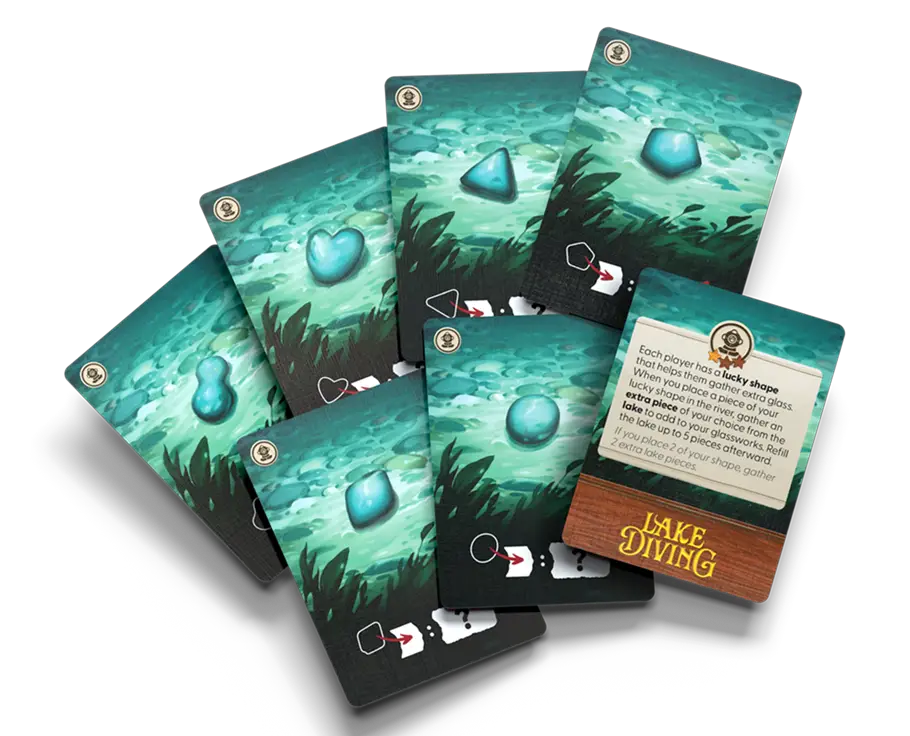
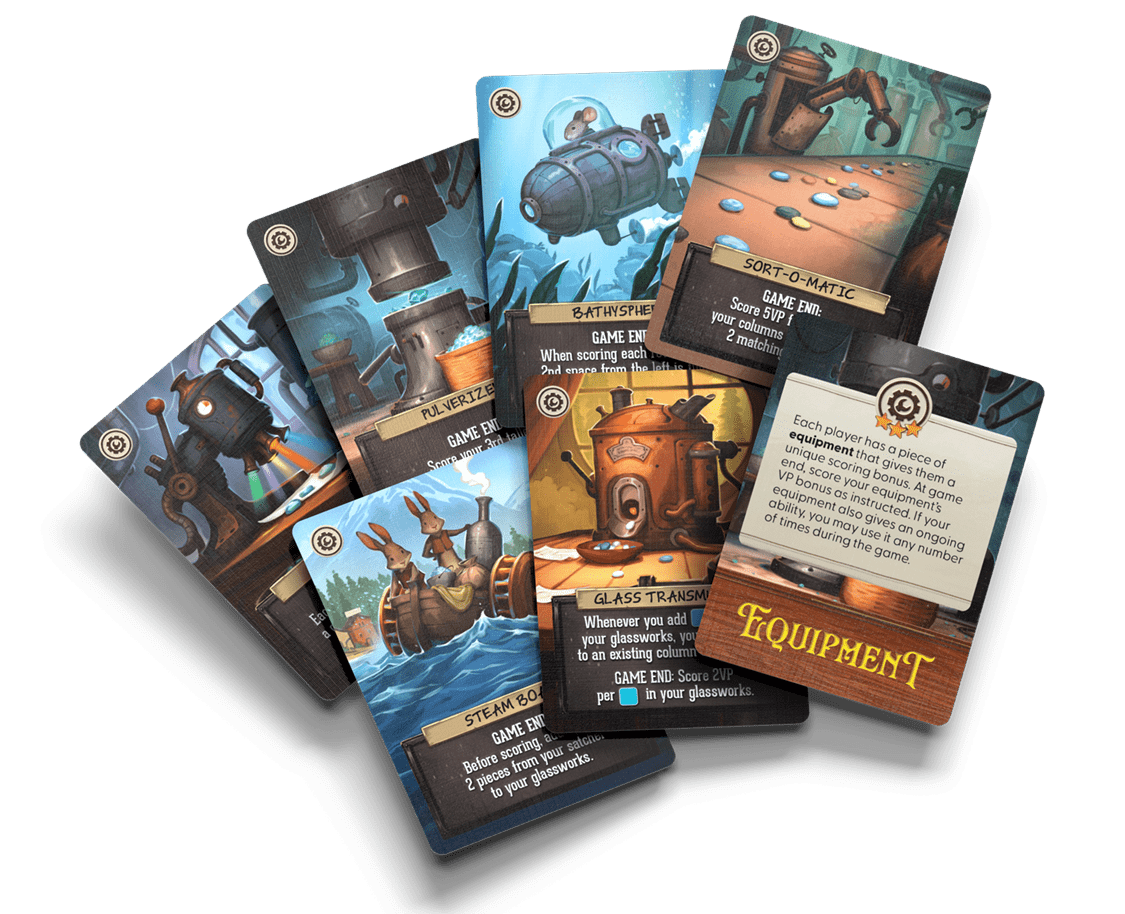
In Lake Diving, for example, each player has a shape that helps them gather extra glass to add to their glassworks when they place the lucky shaped piece in the river, while Equipment allows players to score extra based on their equipment card. More on these later. My one actual critique is the bag is too large for the size of the glass pieces. You really have to dig to get the pieces out and if the bag was about 75% its current size, the bag would be perfect.
How’s it play?
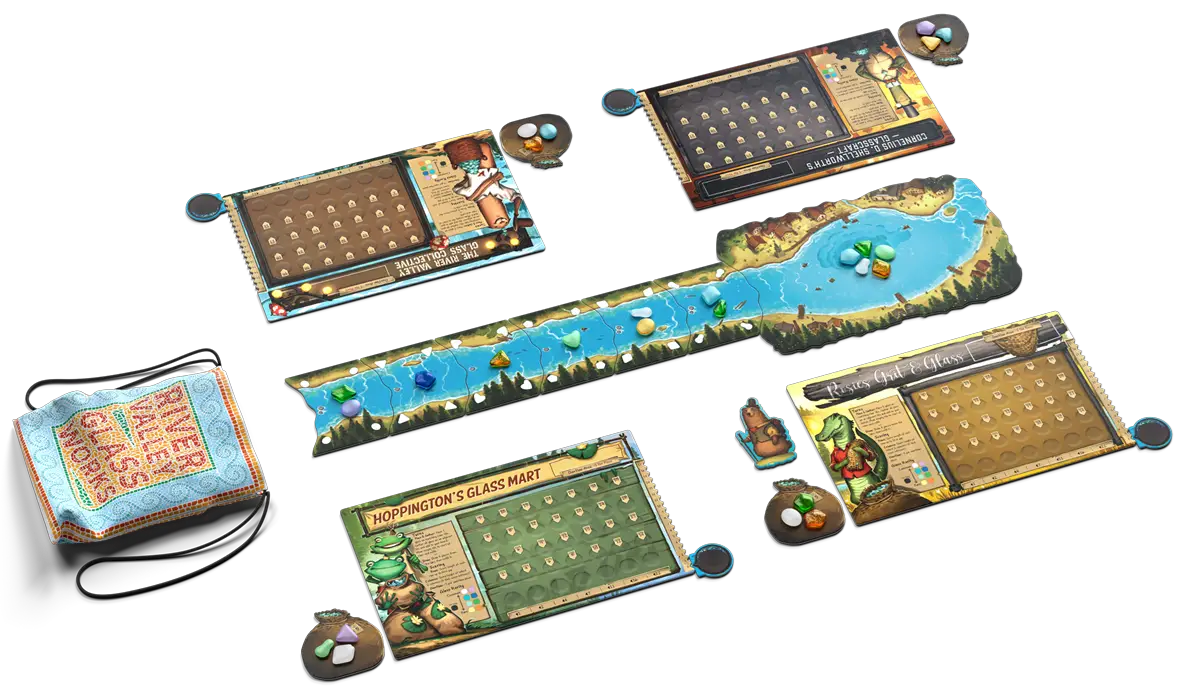
Setup and gameplay for River Valley Glassworks both go pretty quickly. The six river tiles are lined up in random order next to the lake tile. Pieces of glass are drawn onto each of the river tiles based on the number of stones printed on it and five stones are placed on the lake tile. Each player takes 3 random glass tiles and places them on their satchel, their player board, and places the inventory marker on the zero.
The goal of the game is to fill your glassworks with the most river glass but to do so in a way that when it’s time to score, you’ve got full columns and rows, because you only score the rows to the point at which there are no gaps, and your two leftmost highest columns. So in Hoppington’s example below, the player would have scored for the red and blue columns, the points for the green tile on the second row, and the points for the purple tile on the last row.
During your turn, you can do one of two actions. You can either place 1 piece of glass from your satchel into the river on a tile that matches the shape of that piece, then gather all the glass pieces from one tile next to the one you just placed, and place the new tiles on your glassworks. You can alternatively place 2 pieces of the same shape on any tile, and take all the pieces on an adjacent tile. Either time, the emptied tile moves to the end of the river and the number of stones on the tile next to it indicates how many pieces of glass are taken from the bag.
Pieces are placed left to right and bottom to top with each column being one color. The boards say which colors are rarer to help with strategizing. Once you hit your eighth color that piece goes into the overflow. This never happened to me, but probably happens whenever a lot of colors come out of the bag.
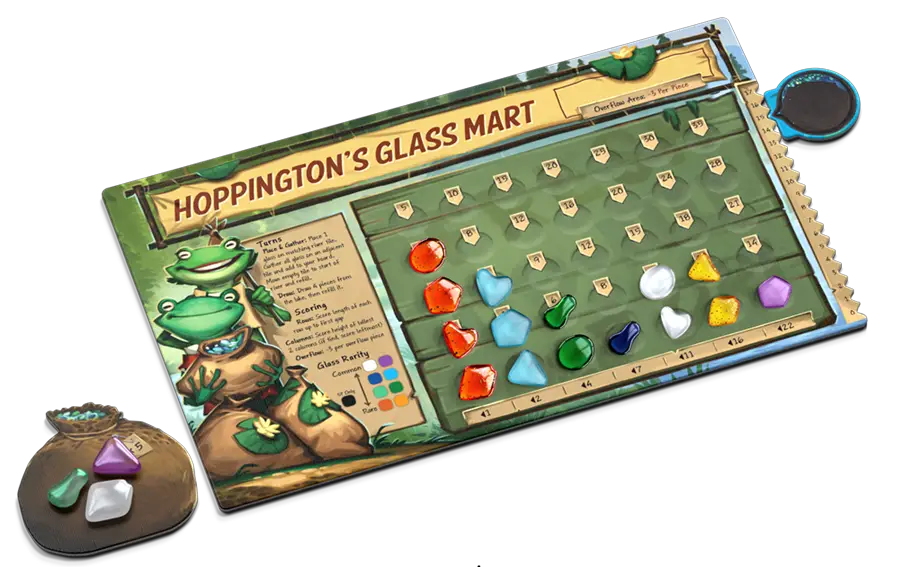
The second option is that you can draw glass pieces from the lake to restock your satchel. For this action, you choose four pieces from the lake and add them to your satchel, but it can only hold 5 pieces so if you have extra, these must be placed in the overflow. Each piece in the overflow subtracts 3 points at the end. Then, you refill the lake.
The game ends when one player reaches or passes 17 pieces. Each player with fewer than 3 pieces in their satchel draws from the bag until they have 3 and the current round of turns goes until all players have gone. Then everyone takes one final turn and scoring commences!
The verdict?
I really enjoyed playing River Valley Glassworks; it’s a fun and fast experience that keeps you engaged. Without the expansion, the game does seem a bit light and might leave players feeling less invested. The modular nature of the expansion is a fantastic addition, but it feels like it should have been part of the base game from the start. It would be ideal if players could choose which expansion to use for each game, adding a layer of customization and replayability right out of the box. The scoring mechanism is especially clever, challenging players to strategize between filling rows and columns, and with 17 pieces to start the end game, strategizing has to change quickly as players gain glass.
Being able to “pay” an extra glass piece to gather tiles from any adjacent tile is another nice feature that enhances gameplay. It gives you more strategic options and allows for clever plays, making each turn feel impactful. The solo mode is surprisingly well-crafted too, offering varying levels of challenge based on which character you choose to play against. This adds depth and keeps the solo experience engaging, and since set up is super fast, it’s a quick solo mode game. I’ve played games that took the same amount of time to set up for solo to actually play!
Overall, I do recommend River Valley Glassworks, but you should also buy the expansion if you want the most holistic experience. You can grab a copy directly from Allplay or your FLGS for $39 now!
Images courtesy of Allplay
Have strong thoughts about this piece you need to share? Or maybe there’s something else on your mind you’re wanting to talk about with fellow Fandomentals? Head on over to our Community server to join in the conversation!

